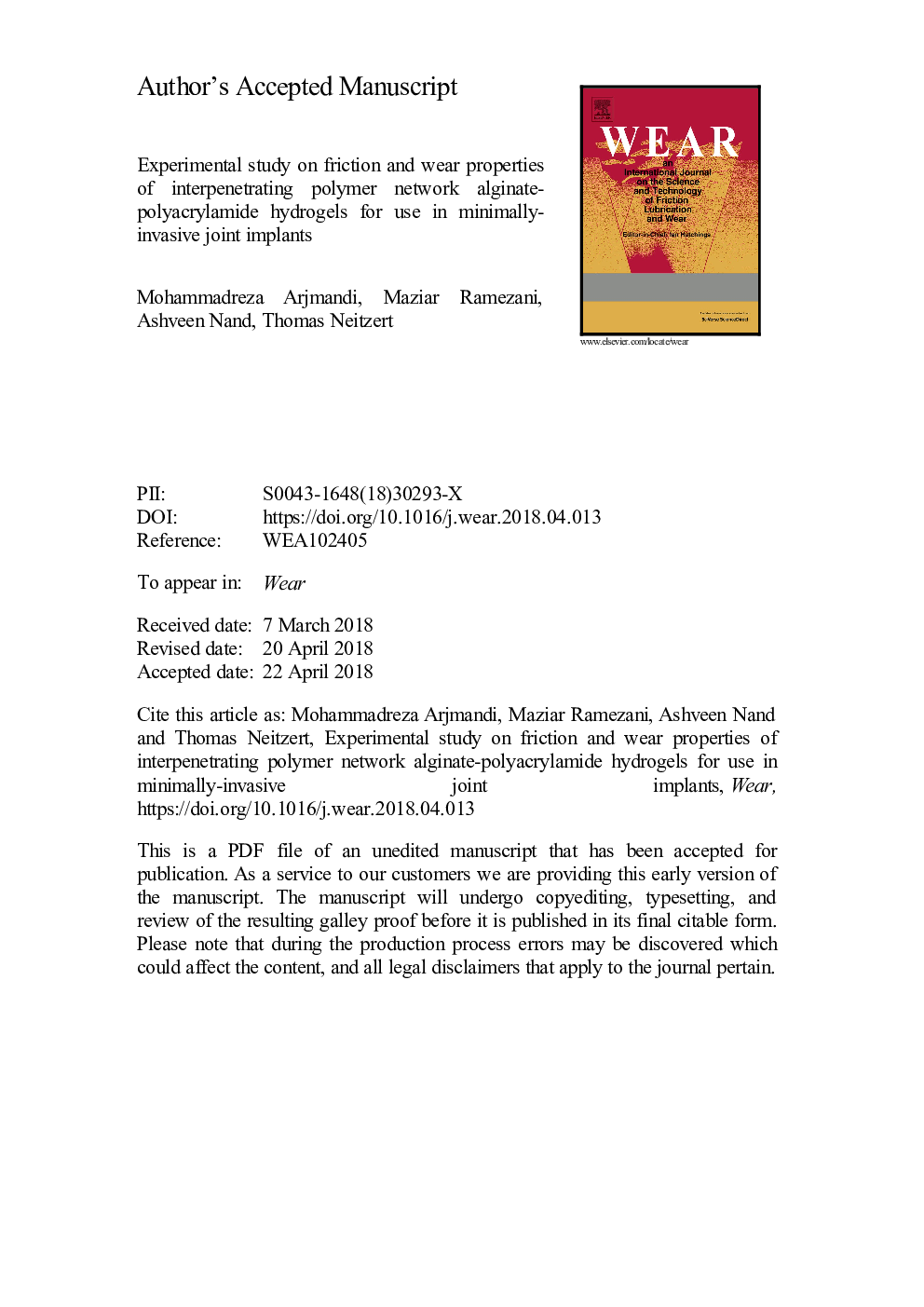| Article ID | Journal | Published Year | Pages | File Type |
|---|---|---|---|---|
| 7003873 | Wear | 2018 | 16 Pages |
Abstract
Alginate/Polyacrylamide (ALG/PAAm) hybrid hydrogel was suggested as an orthopedic prosthesis due to its biocompatibility and promising properties. Their friction and wear performances, however, have remained under-explored. In this study, indentation tests were conducted to obtain the mechanical properties of ALG/PAAm interpenetrating polymer networks, while the tribological response was evaluated by reciprocating sliding motion against alumina ceramic ball. The hydrogel samples were synthesized using two different ratios of crosslinking agent (X.A%) to study the effect of crosslinking on wear resistance of the material. Various loads and sliding speeds were considered to simulate human gait/running cycle, with and without presence of bovine serum as lubricant. Mass loss was quantified by gravimetric measurement of dried samples before and after each test, while the wear volume was measured by profilometry. An increase in the crosslinker concentration resulted in improvements of up to 21% the elastic modulus and 32% the hardness. A trend was observed in mass loss increase with higher loading regardless of crosslinker concentration. However, under higher sliding speed less material was removed due to wear. With lubrication and under the highest load, the minimum mean friction coefficient was obtained for samples with 0.06 X.A% (0.010â¯Â±â¯2.6E-3) which is promising when compared to that of articular cartilage. Visual inspection of worn surfaces by electron microscopy revealed adhesion as the dominant wear mechanism. Overall, the hydrogels with higher crosslinking density were considered as a potential candidate, due to higher stiffness and better tribological performance under lubrication.
Related Topics
Physical Sciences and Engineering
Chemical Engineering
Colloid and Surface Chemistry
Authors
Mohammadreza Arjmandi, Maziar Ramezani, Ashveen Nand, Thomas Neitzert,
